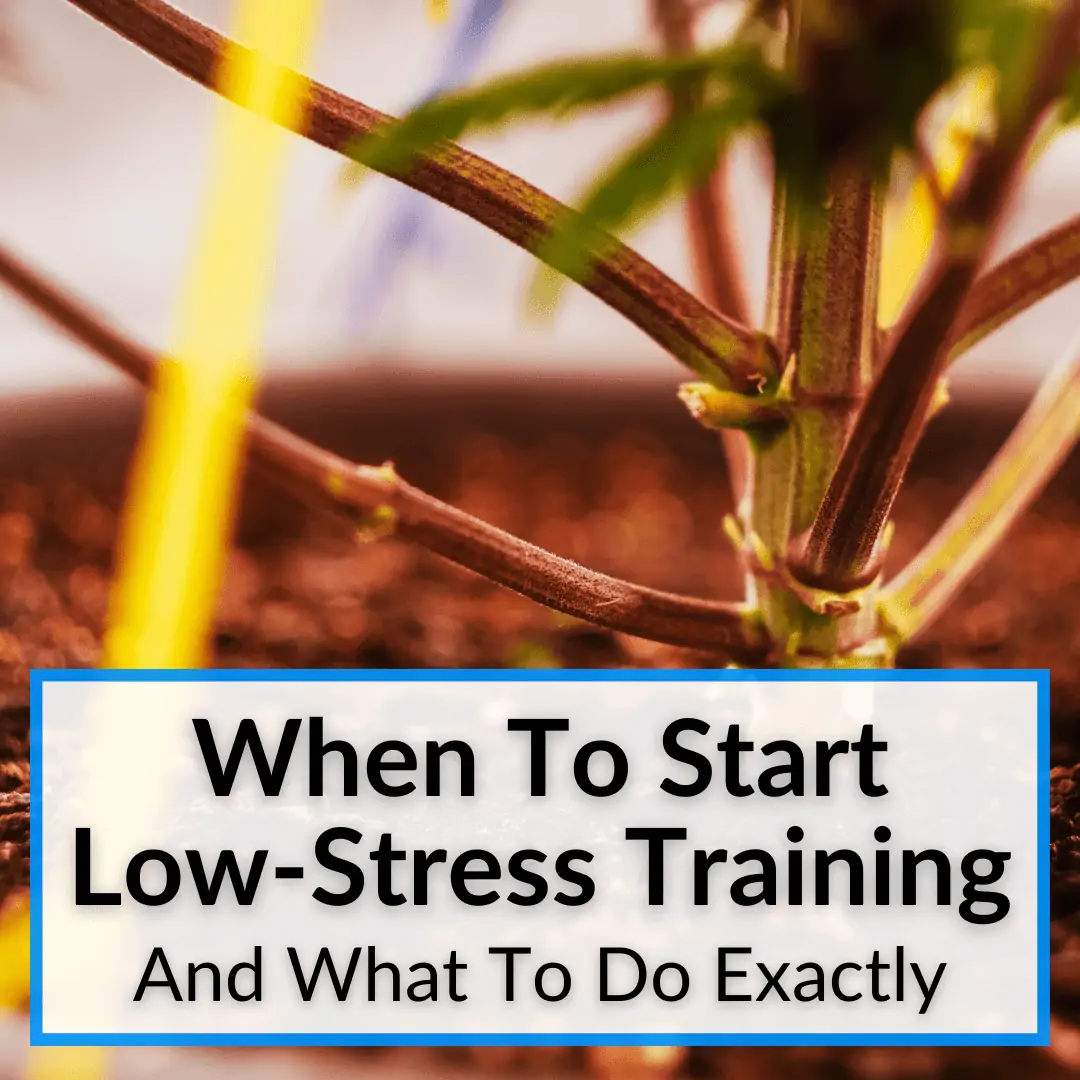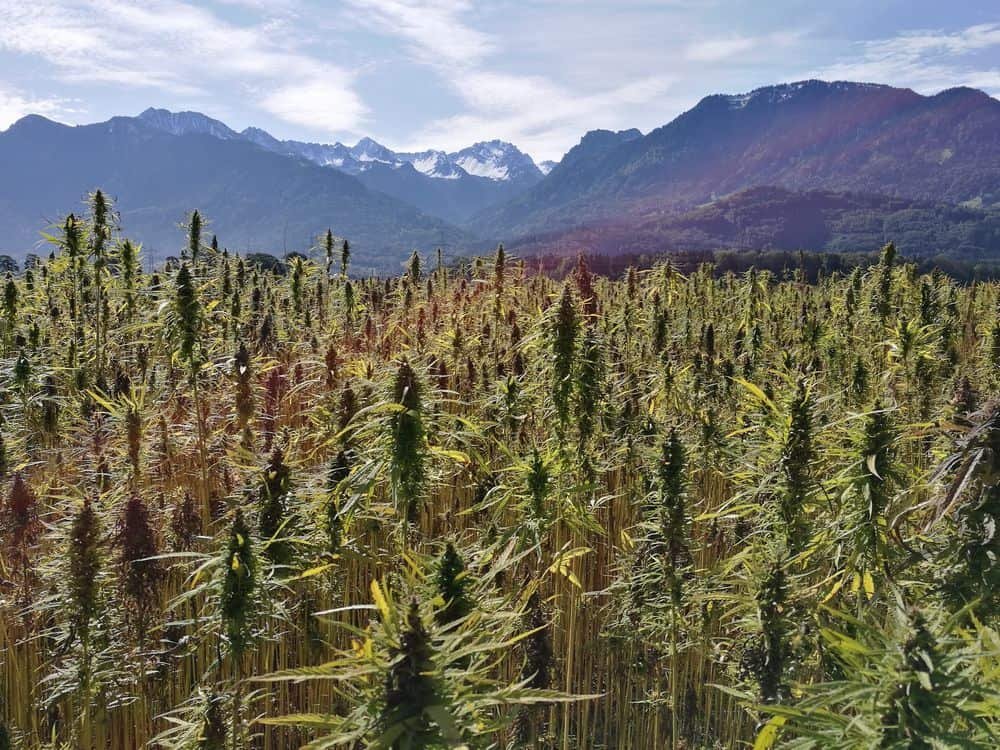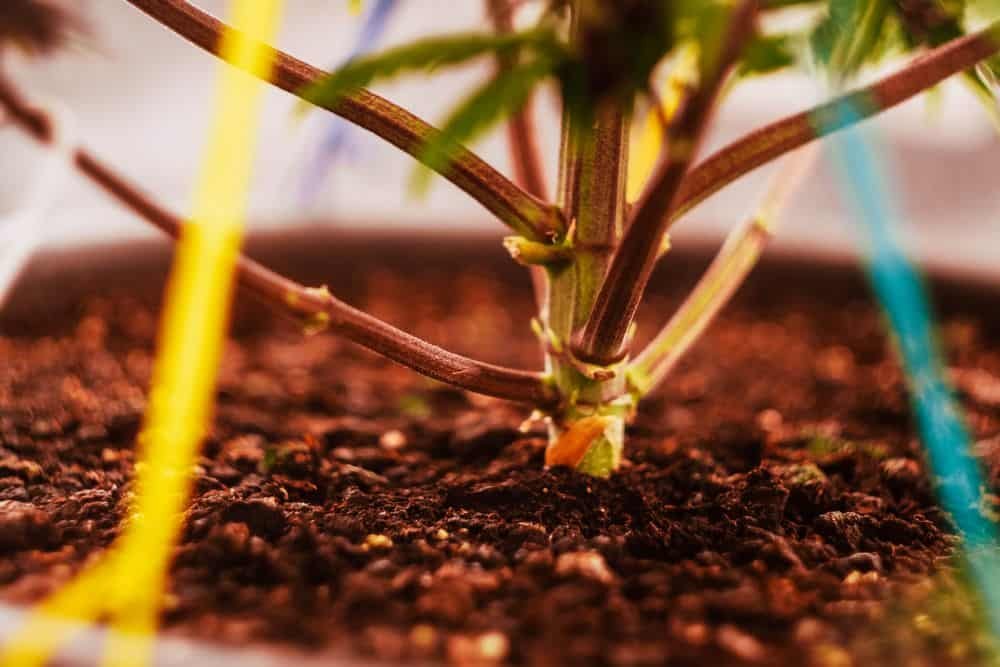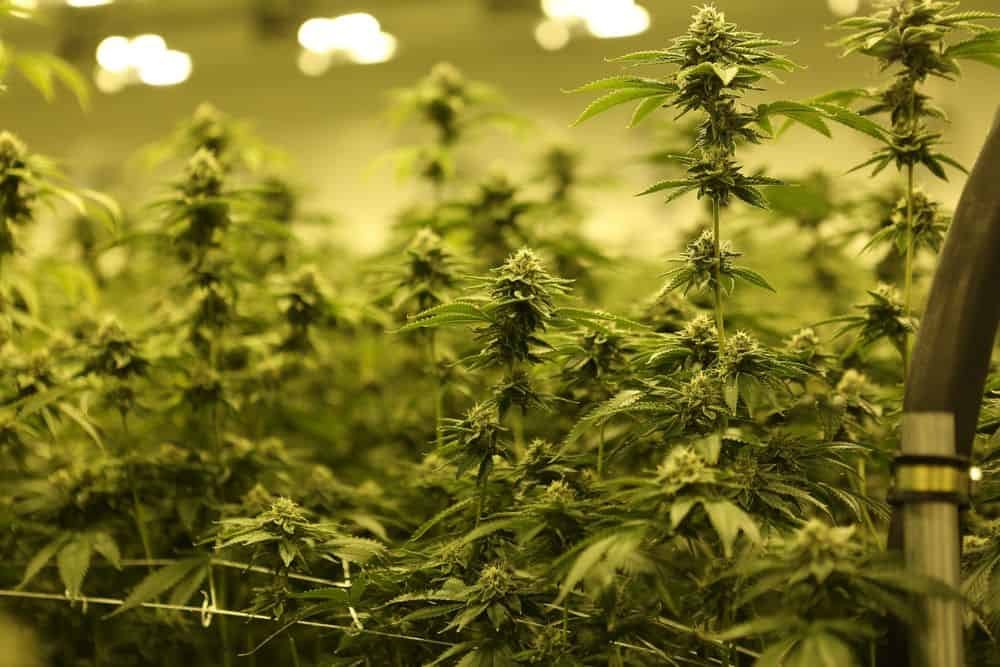 I always recommend keeping things as simple as possible on your first grow.
I always recommend keeping things as simple as possible on your first grow.
Perhaps even your first few grows.
Get the basics right first, before using more advanced techniques to try to maximize yield.
Low-stress training definitely falls under that umbrella.
If you’re just starting out, don’t worry about when to start low-stress training or how to do it.
Just keep your marijuana grow simple.
Once you’ve got some successful grow under your belt, it’s time to work on improving your results. That’s where low-stress training can really come in handy.
Keep reading to learn when to start LST and how to go about doing it. We’ll give you two different methods, so use the one that is better suited for you.
Contents
When To Start Low-Stress Training (And What To Do Exactly)
Low-Stress Training (LST) techniques have become increasingly popular in the last decade. You can use them to not only control the height and shape of your plant, but also to significantly boost the yield.
Low-stress training (LST) techniques are the process of manipulating the shape and growth pattern of cannabis plants to ensure that the plant (or crop) is able to fully utilize the available growing space and capture as much of that delicious sunlight (or grow light) as possible.
When left to their own devices, cannabis plants grow in what is referred to as apical dominance, where the central stalk is stronger, taller, and just generally more robust than the side branches.

This main stem and the cola it holds receive the most nutrients, and the resulting bud is better nourished than the rest of the flowers. This is not ideal when trying to achieve maximum yields, for a few reasons.
- The main stem and cola can block out light and shade the lower flower sites
- The stress of supporting a tall and heavy main stem can make the plant weaker overall, which in turn reduces its ability to reach its maximum potential yield
- The main cola receives more of the nutrients available, resulting in smaller and less dense secondary flower development
As an indoor grower, you need to know how to stop plants from growing tall like this. Low stress training is one of the three main methods for achieving this.
By employing LST techniques, you can flatten out the growth pattern and canopy, allowing for better light penetration throughout the entire plant.
This type of training also tricks the plant into more evenly distributing the nutrients and the main growth hormone (auxin) to all the budding sites. You get larger buds and denser buds.
How And When To Implement LST Techniques
We will give you a more involved answer to both the ‘how’ and the ‘when’ below. But it makes sense to offer a brief summary of both first.
- When: You can start as soon as you see 3 or 4 nodes on the plant. This, of course, will depend on how strong your plant is, with some strains needing 5 nodes of growth, but 4 is the sweet spot for the majority of strains.
- How: Using twine, or soft garden ties, you can begin gently tying down the main stem and any branches that may be growing too high. Don’t rush. Take a few days and slowly manipulate the shape of the plant to where it is growing on a more horizontal plane. This will force the plant to grow lower and bushier.
That’s about as basic an answer as we can possibly give. But while it’s not rocket science, it is a little more complicated than that.
For more detailed information and some more advanced techniques, let’s dive a little deeper into the subject and explain the process fully. We also have a step-by-step guide to low-stress training.
How To Implement Low-Stress Training For Weed Plants

Low-Stress Training is all about manipulating and bending a cannabis plant against its will, and against the natural growth pattern, to fit your needs. The end goal is to create an even canopy of future flowers and get the most out of each square foot (or meter) of your grow space.
You can achieve this in a variety of ways, and with a variety of tools. The two most common methods are the tie-down method and the SCROG method.
Tie-Down Method
The most basic form of LST is the tie-down method, where you use twine or something similar to tie down the branches and main stem of the plant. This forces the plant to grow horizontally, rather than vertically.
By slowly tightening the ties, you can slowly but surely begin to flatten out the growth pattern. It’s best to start just above the third node, and then add more ties as the plant grows.
If growing in a pot, you can use a drill or knife to make small holes that act as tie-off points, and slowly train the plant to curve around that horizontal growing plane.
SCROG Method

If you are looking for a little more control, then you can go down the SCROG route. SCROG stands for Screen Of Green, and it’s a very simple, easy-to-execute, and effective way to keep the canopy all at one uniform level. See our comparison of SCROG vs SOG for more.
For scrogging, you will need a simple trellis or netting of some kind. You set up this ‘screen’ at your desired height (usually around one foot above the plant base), and slowly feed the branches through the netting to keep them at this one height.
Scrogging is one of the most effective techniques and can be combined with other stress training super effectively.
When To Start Low-Stress Training For Cannabis Plants
This isn’t the most straightforward question to answer. It really does depend on the strain you are growing, and the environmental conditions.
As a general rule, it’s best to wait until the plant has at least three to four nodes. You may be able to manipulate some cultivars earlier than this, but you run the risk of stunting the growth if you overstress the plant.
You also don’t want to wait too long, because the main stem becomes less flexible as the plant develops, and you can actually snap the whole thing if not careful.
With the tie-down method, it is best to start after the third node, and then add a new tie every second node after that. By adding tie-down points to the lip of the pot, you can slowly start to spiral the plant, keeping the newer growth at the same height as the parts that have already been tied down.
With scrogging, all you have to do is set up the screen horizontally around one foot above the plant and wait for it to grow into place. Then it’s just a matter of slowly feeding the branches through the netting. Easy peasy.

Keep in mind that if you are working with autoflowering strains, you need to be vigilant not to overstress the plants. Autos have a shorter veg period, and as such cannot handle overstressing and the stunting of growth that comes with heavy stress.
When To Start Low-Stress Training: Final Thoughts
Unfortunately, we can’t tell you exactly when to start low-stress training, since it does depend on the strain and the grow environment. But our general guidelines should give you a place to start. Use those and then hone in on the perfect time to start LST for your setup.
And remember: if you are just starting out growing cannabis, I would hold off on LST until you have a few grows under your belt. There are so many things involved, you want to make sure you get the basics right and get a decent harvest first. Then worry about more advanced techniques.
Leave a Reply